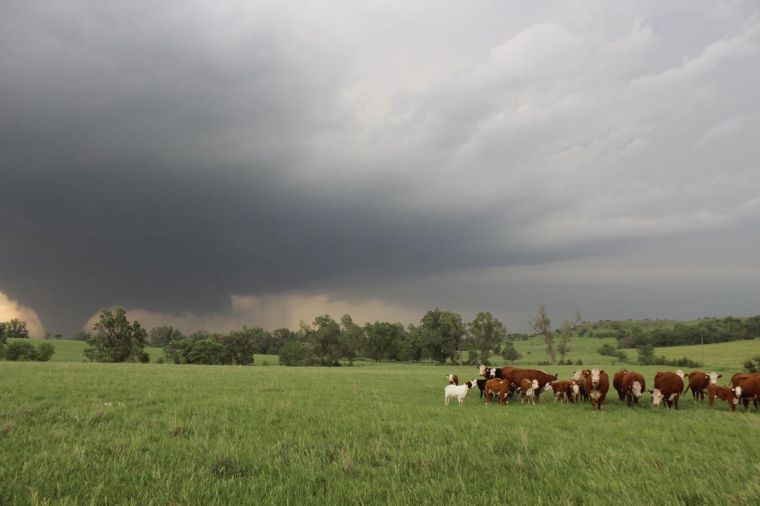University works to prepare for severe weather
March 3, 2014
During National Severe Weather Preparedness Week from Sunday-Saturday, the National Oceanic and Atmospheric Administration is inviting all people to “Be a Force of Nature” by taking part in severe weather preparations in coming months and advocating for others around them to do the same.
In taking an active role in preparedness, Illinois Public Media, in conjunction with the University, will host “Becoming Weather Aware: Severe Storm Preparedness with Meteorologist Dr. Jeffrey Frame,” at 7 p.m. on Wednesday at the Beckman Institute. Frame, meteorologist and clinical assistant professor in atmospheric sciences, will cover thunderstorm basics, lightning, flash floods, high winds, hail, tornadoes and promote severe weather safety.
Illinois’ severe weather peak occurs during mid to late spring and early summer, Frame said, adding that it is important for people to refresh their memory or learn what to do when severe weather hits.
“The No. 1 thing is being weather aware,” Frame said. “If you don’t hear the warnings you’re not being warned. You won’t be able to take the weather precautions.”
Frame recommends paying attention to local forecasts, utilizing websites such as the National Weather Service as well as listening to local or weather radio to stay up to date with warnings.
Get The Daily Illini in your inbox!
One very important fact to know, Frame said, is the difference between a weather watch and a warning. A watch means there is an elevated risk of severe weather — usually in a portion of several states, for several hours. Nothing has yet been sighted — it is simply a call to attention. A severe weather warning means a storm spotter or radar has detected incoming severe weather. It is important to take shelter in this situation, Frame said, and listen to information provided.
According to the National Weather Service, each year, Americans experience an average of 100,000 thunderstorms, 10,000 of which are severe; 5,000 floods; 1,000 tornadoes; and an average of 21 and falling deadly hurricanes.
Champaign County is considered StormReady, a National Weather Service program that prepares communities with safety and communication skills in the case of an emergency. Communities that are StormReady are more prepared for severe weather events due to advanced planning, education and awareness according to the National Weather Service.
The University has an overall campus emergency action plan, guiding overall campus emergency operations as well as building emergency action plans, managed by Sherry Wooten, emergency planning coordinator and University Police Department Lt. Todd Short, director of the Emergency Planning Bureau.
“When it comes to building emergency action plans, the idea with those specific plans is to get information out to the employees that work in those buildings to assist all the people with evacuation and/or shelter place issues during the time of an emergency situation,” Short said.
A designated map indicating all emergency-prepared buildings on campus is not currently available; however, it is in the process of being created. Over the last 18 months, building floor plans have been created for the 200 buildings on campus that have been assessed. Short said the department has a long way to go until the campus has complete plans.
Based on construction design, architecture and engineering of the building Short and Wooten work with Facilities and Services’ Code Compliance and Fire Safety section to review areas that can be used as storm shelter locations as well as areas of rescue.
The buildings’ floor plans indicate storm shelter locations, evacuation station areas, exits and also includes areas of rescue.
On its website, the Division of Public Safety hosts a list of the campus buildings with completed floor plans.
“The important thing to remember — if you are a student — is that when you go into a building, look for those floor plans posted on the walls,” Short said. “If you can see that map, the storm shelter locations will be posted for reference.”
He also said the most important thing to remember is to sign up for Illini Alerts, which will warn users if, for example, a tornado warning has been issued for the campus area.
Jessica can be reached at [email protected].







